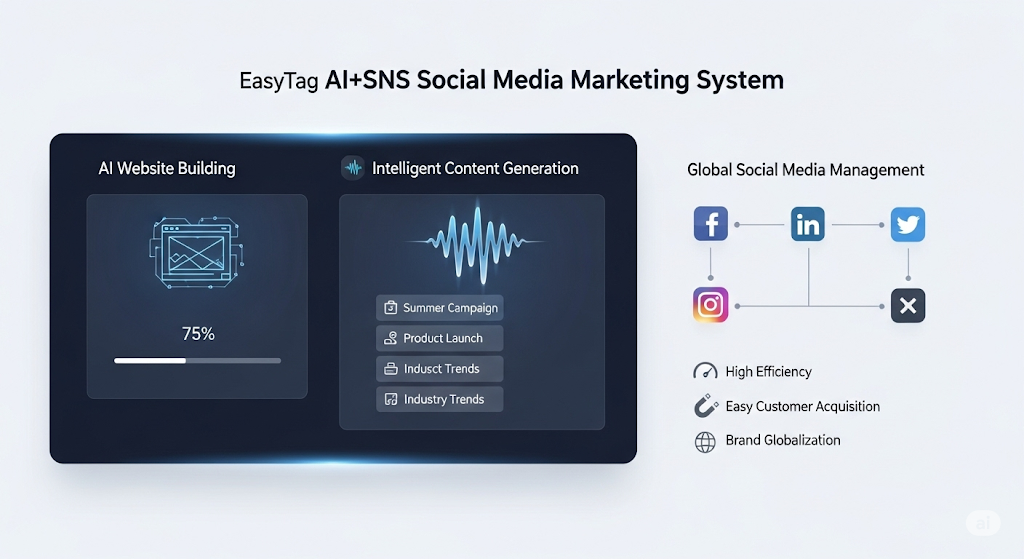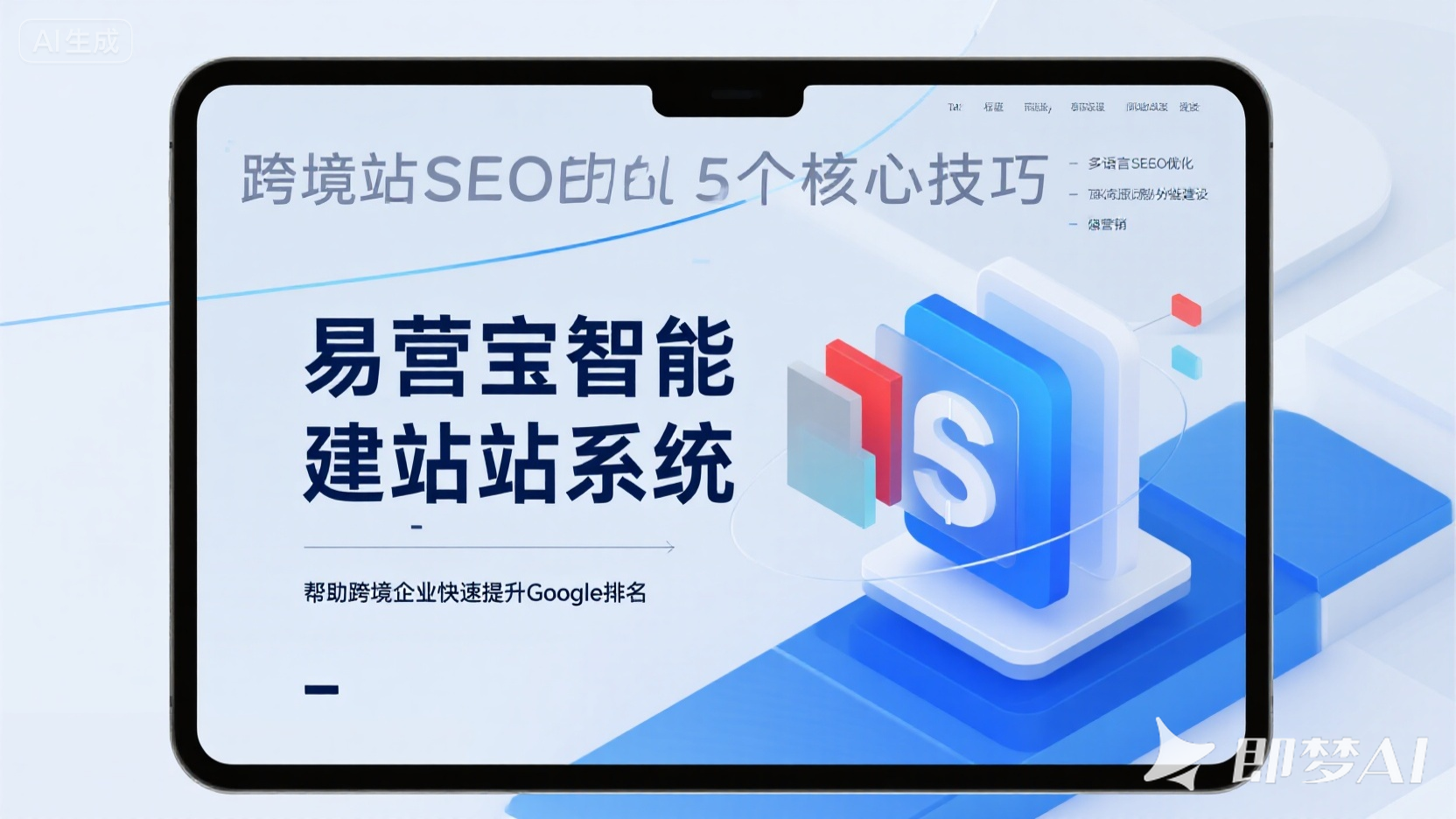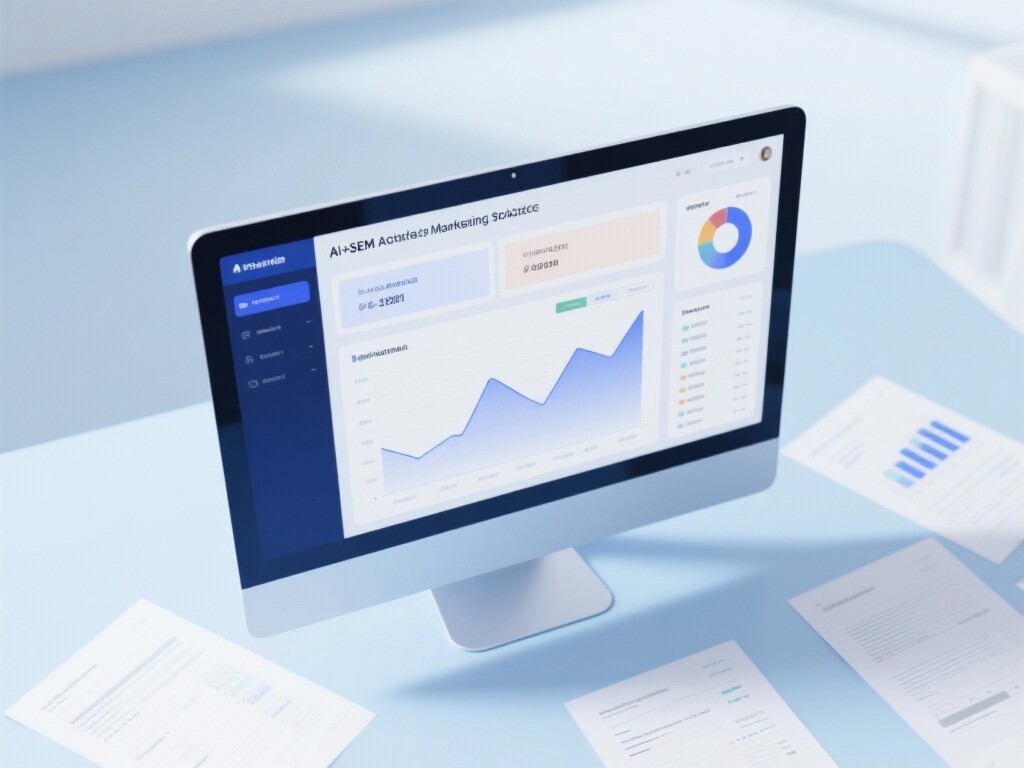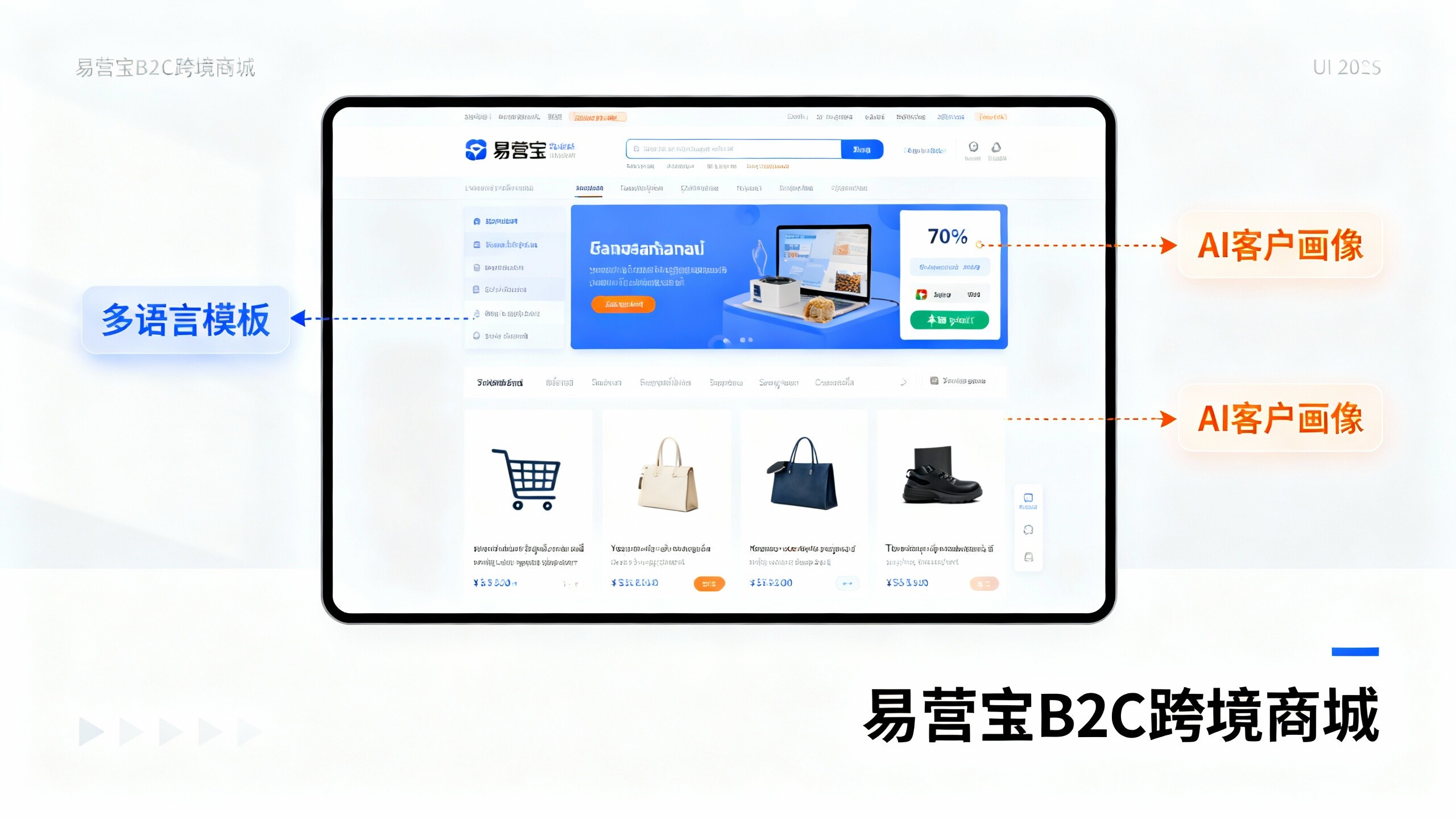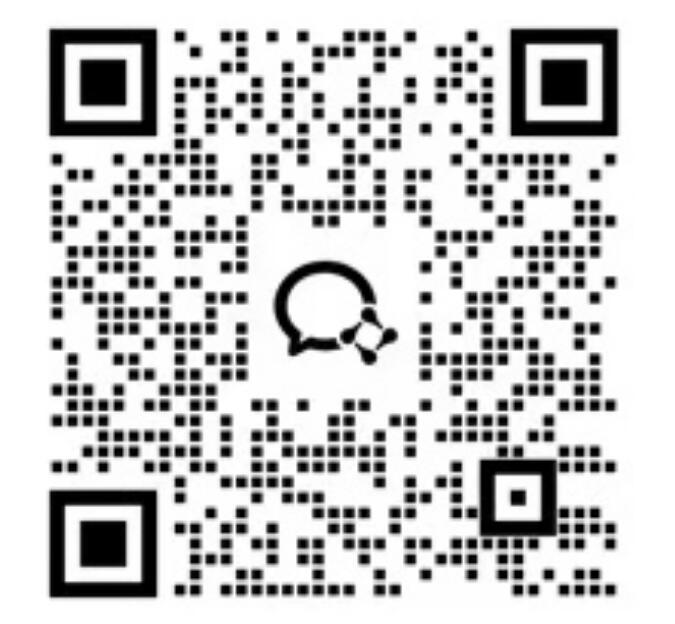Easy Operation Cloud Intelligent Website Marketing System Platform!
- 为什么90%的跨境营销团队选AI多语言建站系统?实测数据揭秘2025-11-18View details
- Eyingbao City Partner Program: Zero technical background can earn over $10K/month? Real case study breakdown2025-11-18View details
- Middle East Website System Comparison: Self-built vs Yisoubao - Which is Faster?2025-11-18View details
- Harbin City Partner Testimonial: AI Marketing Engine Boosts Conversion Rates by 5x2025-11-17View details
- Dalian City Partners' Real Record: Why Did They Choose AI Marketing Engine? The Results Are Astonishing2025-11-14View details
- New Opportunities for Wuxi City Partners: AI Marketing Engine Empowers Traditional Business Transformation2025-11-14View details
- Why is the AI Marketing Engine + City Partner Model Rapidly Exploding in Nanchang?2025-11-14View details
- Before becoming a Taiyuan City Partner, you must know these 5 truths about AI marketing engines2025-11-17View details
Which SaaS for Foreign Trade Independent Websites is Stronger? 5-Dimension Comparison + Real Cost Calculation
How to choose the best SaaS platform for independent foreign trade websites? This article provides a comparative analysis across 5 key dimensions, essential points for multilingual foreign trade website construction, and real cost calculations to help users quickly select and implement the right solution.
This guide is tailored for researchers and operational professionals, focusing on a practical comparison of independent foreign trade website SaaS platforms across functionality, performance, multilingual support, SEO capabilities, and costs. Selecting the right multilingual website-building platform impacts not only initial loading speed and conversion rates but also long-term natural traffic and advertising ROI. This article offers actionable checkpoints, cost calculations, and implementation roadmaps to help users swiftly decide among responsive website platforms and SaaS website systems.
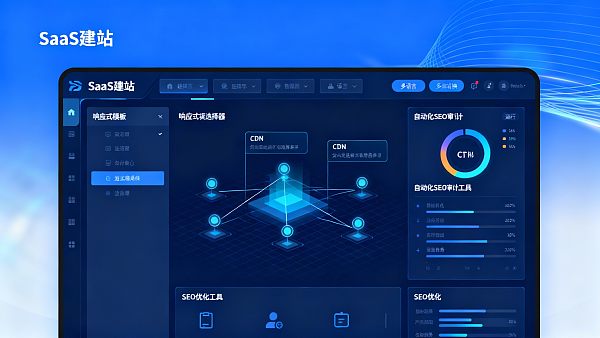
1. Five Key Comparison Dimensions: Functionality, Scalability, Performance, Security, and Support
When selecting a SaaS platform for independent foreign trade websites, evaluate these five dimensions: functionality and scalability, multilingual and geo-targeting capabilities, localization performance (including CDN and loading), SEO and content capabilities, and after-sales support and compliance (payments, taxes, and privacy).
Functionality and Scalability: Assess whether the platform supports enterprise-grade multilingual CMS, responsive website templates, and third-party integrations (ERP, CRM, payment, and logistics). Top-tier SaaS website systems should offer modular expansion, plugin marketplaces, and custom scripting for future iterations and marketing campaigns.
Multilingual and Geo-Targeting: Multilingual foreign trade websites require more than basic translation. Look for hreflang support, multi-currency display, region-specific content, compliance alerts, and localized payment channels. The system should combine machine and human translation workflows to ensure technical terms and industry keywords remain consistent across languages.
Performance and Security: Loading speed directly impacts SEO and conversions. Verify global CDN coverage, auto-SSL, DDoS protection, and server distribution (preferably across seven continents). Also, check for page caching, lazy image loading, and mobile acceleration. Data privacy compliance (e.g., GDPR) is critical for cross-border websites.

SEO and Content Capabilities: The platform should provide technical SEO audits, structured data support, smart TDK generators, and internal linking tools to boost content and product page visibility. For users wondering "how to optimize independent foreign trade websites," AI-driven keyword mining and batch content generation can significantly improve traffic efficiency.
Support and Compliance: Evaluate after-sales models (self-service, managed, or hybrid), local support teams, compliance consultation, and partnerships with major ad platforms (Google, Meta, Yandex). These factors affect long-term operational costs and ad performance. Prioritize vendors with global partners and patented technology guarantees.
2. Key Considerations and Implementation Details for Multilingual Foreign Trade Websites
Building a multilingual foreign trade website requires a coordinated effort across marketing, technology, and content. Core tasks include domain strategy, localized content planning, technical SEO, payment and logistics integrations, and mobile-first responsive design.
Domain and Hosting: Choose top-level domains (ccTLD) or subdirectories/subdomains based on target markets, paired with regional CDN nodes to reduce latency and improve search engine friendliness.
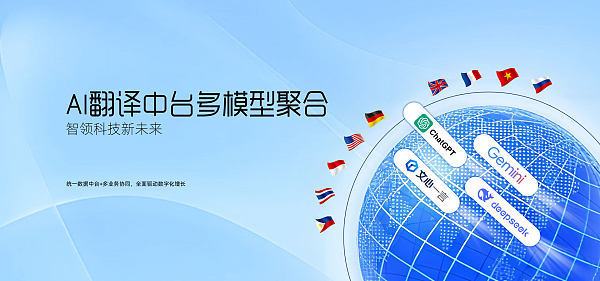
Content and Multilingual Strategy: Use standardized templates (product descriptions, spec sheets, FAQs, TDK) enhanced by AI (auto-generated multilingual content and TDK), but ensure local review to avoid translation inaccuracies. Structured data (schema.org) and auto-generated image ALT tags boost product visibility in search results.
Technical SEO and Performance Optimization: Enforce mobile-first design, image compression (WebP), lazy loading, and HTTP/2 or HTTP/3 support. Deploy automated SEO audit tools to scan for dead links, duplicate content, and metadata inconsistencies to maintain stable rankings.
3. Real Cost Calculation: One-Time vs. Recurring Investments (With Examples)
Costs for independent foreign trade websites fall into three categories: setup and one-time development, SaaS subscription or managed hosting fees, and ongoing operational costs (content, ads, maintenance). Below are typical cost estimates for SMBs and mid-sized enterprises to aid budgeting.
Example Budget (SMB First-Year Estimate): One-time costs: ¥6,000–30,000; monthly operations and promotions: ¥3,000–20,000. Mid-sized enterprises or rapid-expansion scenarios will incur higher annual investments. Cost factors include target market count, language count, managed service selection, and custom development needs.
4. Implementation Roadmap and Common Pitfalls (Actionable Checklist)
A standard implementation involves four phases: market research, MVP launch with multilingual deployment, SEO and performance optimization, and iterative scaling with ad optimization. Each phase should have clear deliverables and KPIs.
Phase 1 (0–2 weeks): Define target markets, keyword lists, and competitor analysis; finalize domain strategy and tracking (GA4, server-side, or cloud logs). Phase 2 (2–8 weeks): Launch an MVP using responsive templates, ensuring core language pages, payment, and logistics interfaces are functional. Phase 3 (8–16 weeks): Conduct technical SEO audits, supplement structured data, and optimize images and resources. Phase 4 (ongoing): Content deployment, backlink building, and ad testing, driven by data analysis.
Common pitfalls: Over-reliance on machine translation without local review, treating SaaS as a one-time purchase without ongoing optimization, and neglecting technical SEO (e.g., duplicate content or incorrect hreflang implementation). Avoid these by integrating operational and technical teams early in project governance.
5. SEO and Operational Tool Integration (Including AI-Driven Content Capabilities)

For SEO and content operations, integrate keyword research, auto-TDK generation, batch AI content, and technical SEO audits into your toolkit. An AI+SEO ecosystem can transform "how to build an independent foreign trade website" from a manual process into a quantifiable workflow: from keyword matrices to content production, internal linking, and performance monitoring.
For example, services with AI-powered keyword mining, smart TDK generators, auto-ALT tags, page speed diagnostics, and one-click optimization can multiply content production efficiency while maintaining quality. Try services like AI+SEO dual-engine optimization, which typically include keyword competitiveness analysis, batch AI content generation, real-time monitoring, and are ideal for cross-border website construction and global SEO.
When integrating ads and social media (e.g., Google Ads, Meta, Yandex), feed search and social data back to your analytics system to optimize landing pages and paid conversions. Simultaneously, maintain backlink quality and structured data to boost enterprise multilingual CMS authority across markets.
Conclusion and Next Steps
Choosing an independent foreign trade website SaaS requires balancing short-term deployment speed with long-term scalability: prioritize multilingual capabilities, technical SEO, global performance, and sustainable content production. By comparing the five dimensions, clarifying multilingual construction essentials, and calculating real costs, researchers and operators can make faster, business-aligned decisions.
With a decade of experience, YiYingBao offers smart website building, SEO optimization, social marketing, and ad投放 capabilities, serving over 100,000 enterprises and ranking among China’s top SaaS providers. To validate multilingual website solutions or request custom cost estimates, contact our consultants for a 1:1 diagnosis and trial recommendations.
Contact us now to learn more about cross-border e-commerce website construction and global SEO solutions, or apply for a free consultation and trial to help your independent foreign trade website reduce costs, increase efficiency, and achieve global growth.
- Website
- Platform
- Responsive design
- social media marketing
- Google Ads
- Multilingual website construction
- Campbell (name)
- SEO
- free-standing station
- SEO optimization
- Intelligent website building
- Foreign trade independent website
- Multi-language website
- Link building
- Global SEO Website System
- Enterprise Multilingual CMS
- Cross-border e-commerce website
- SaaS Website System
- Responsive website platform
- Cross-border website construction
- How to create an independent foreign trade website
- Multilingual Website Construction for Foreign Trade
- Foreign Trade Standalone Site SaaS
- Multilingual Website Construction Platform
- Responsive Web Design
Related Articles
 Cost and Timeline for Multilingual Foreign Trade Website Development: How Can Small and Medium Teams Implement in 3 Steps?
Cost and Timeline for Multilingual Foreign Trade Website Development: How Can Small and Medium Teams Implement in 3 Steps? How to Build a Foreign Trade Independent Website in 3 Steps with EasyStore SaaS Platform?
How to Build a Foreign Trade Independent Website in 3 Steps with EasyStore SaaS Platform? How to Improve Conversion Rate in 3 Steps with a Foreign Trade Marketing System? Practical Case Study Revealed
How to Improve Conversion Rate in 3 Steps with a Foreign Trade Marketing System? Practical Case Study Revealed
Related Products












